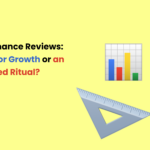In today’s dynamic job market, traditional CV formats may not always adequately represent your qualifications, especially if you’ve encountered career gaps due to factors like maternity leave, prolonged job searches, relocation, or career transitions. However, there’s a solution: the functional CV.
Unlike its chronological counterpart, the functional CV shifts the focus from a chronological timeline to highlighting your skills and experiences that align with the job you’re pursuing. This format is particularly advantageous for individuals changing careers or re-entering the workforce after a break.
By prioritizing relevant skills and experiences, tailored to match the employer’s needs, the functional CV effectively showcases your capabilities. This flexibility allows you to present yourself as a viable candidate, even if your previous roles seem unrelated to the position you’re seeking.
Here is a structure commonly used in functional CVs:

A guide on how to effectively describe your skills:
- Identify Relevant Skills: Start by identifying the skills that are most relevant to the job you’re applying for. These can include technical skills, soft skills, language proficiencies, and any other competencies that are important for the role.
- Organize by Category: Group your skills into categories to make them easier to navigate. For example, you could have categories such as “Technical Skills,” “Project Management Skills,” “Communication Skills,” etc.
- Use Action Verbs: When describing each skill, use action verbs to convey your level of proficiency and how you’ve applied that skill in previous roles. For example, instead of simply stating “Proficient in Microsoft Excel,” you could say “Developed complex spreadsheets in Microsoft Excel to analyze financial data and streamline reporting processes.”
- Provide Examples: Whenever possible, provide concrete examples of how you’ve used each skill to achieve specific outcomes or solve problems. This helps demonstrate your abilities in a real-world context.
- Quantify When Possible: Whenever possible, quantify your skills to provide a clearer picture of your capabilities. For example, instead of saying “Strong leadership skills,” you could say “Led a team of 10 people to successfully complete a project ahead of schedule and under budget.”
- Tailor to the Job: Customize your skills section to align with the requirements of the job you’re applying for. Highlight the skills that are most relevant to the position and the needs of the employer.
- Be Honest and Specific: Be honest about your skills and abilities, and avoid exaggerating or misrepresenting your level of proficiency. Provide specific details that demonstrate your expertise in each skill area.
In essence, the functional CV empowers you to bridge career gaps and convey your value to potential employers based on your abilities, ultimately opening doors to new opportunities in your professional journey.






